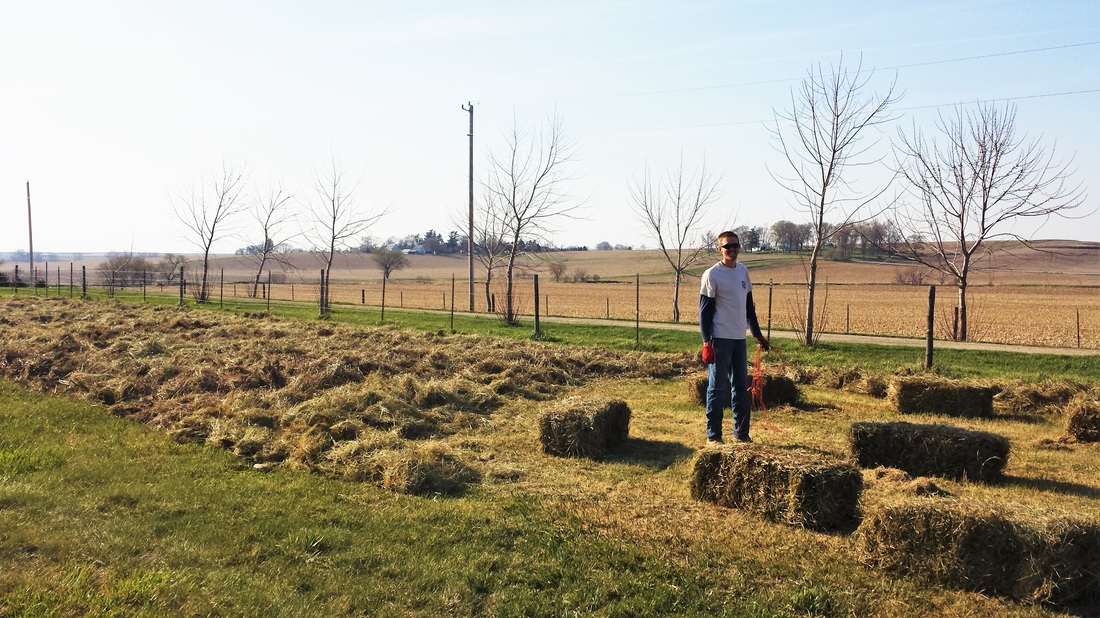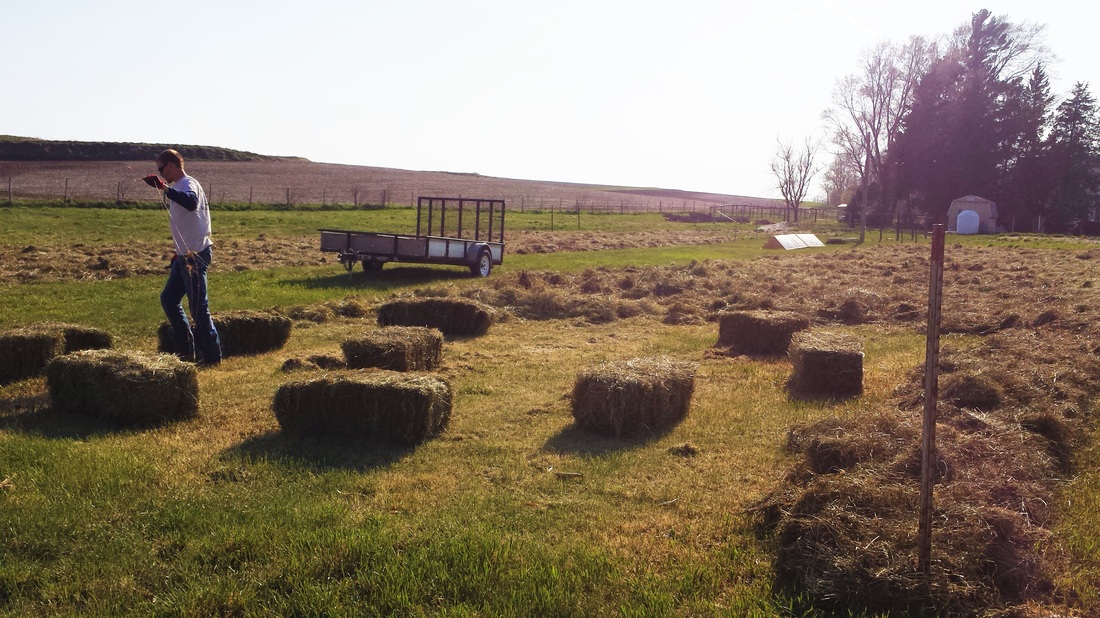So WHY are we doing this??
- To create more garden space without having to till
- To suppress weeds – Yay for minimal weeding!!
- To retain more moisture in the soil
- To build up the organic matter of the soil
- To preserve & protect our precious topsoil!! Have you ever been tilling in your garden and watched the topsoil blow away like dust in the wind?! Even on fairly calm days this happens!!!

Now, there is a time and a place for tilling and we will actually be doing some tilling ourselves in a couple of weeks when we prepare another portion of the pasture for …. Oops, that’s a whole other blog post! For now, it will suffice to say that there is a time and a place for tilling but NOT Every. Single. Day. In. A. Constant. Battle. With. Weeds.
Will this little experiment of ours work?
Will we really have less weeds to pull?
Well, it worked last year. After struggling through most of June, we decided that trying to stay ahead of the weeds was impossible. We had plenty of hay leftover from winter so we broke down and gave this crazy idea a try. NP and I both read extensively about mulched gardening before we finally decided it was worth a try.
Aaaaaand, we LOVED it!!
So much so that now we are using the technique not only to prevent weeds (and do lots of awesome things for the soil) but also to prepare future garden plots. For that purpose it works so-so. We tested out the technique with one garden plot and one strawberry plot last fall. What we have found so far is that the first year you will fight the sod a bit as some patches of grass will still prevail. However, if you first scalp the grass with the lawn mower and if you apply a thick enough layer of hay (8 inches or so), it does kill the majority of the grass and leave the ground workable. It has worked well for us to plant ‘viney’ fruits and vegetables like watermelon and squash in the newer plots and use the 2+ year plots for ‘row’ crops like carrots and beets.
Some might argue that hay is simply too expensive – and we do have an advantage here because we are already making hay for the animals – but even if we had to buy the hay, the cost of the hay pales in comparison to the value of the hours spent tilling and weeding in a traditional garden setting.
And it’s not ALL about the weeds. The other awesome thing about mulched gardening is that the hay breaks down throughout the year, adding nutrients and organic matter to the soil just by being there! The mulch also retains moisture. This is especially important during the dry periods of summer. It means that we have to water less and when we do water, the water stays around long enough to do its job instead of running off or evaporating right away. What’s not to like about conserving soil and water??
So, we embark on year 2 of this crazy journey, surrounding ourselves with more and more ‘fluff’.
Happy Earth Day! What are you doing to improve your environment? We would love to hear from you in the comments!




 RSS Feed
RSS Feed